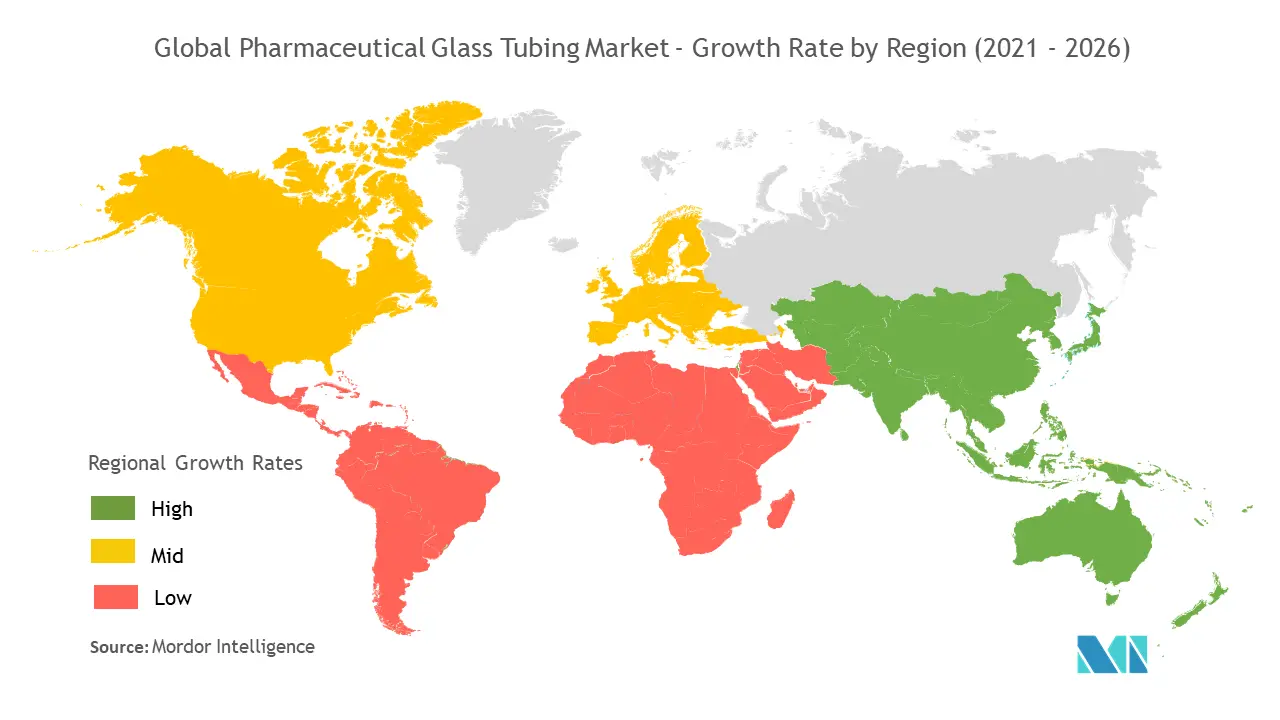Market Trends of Pharma Glass Tubing Industry
This section covers the major market trends shaping the Pharma Glass Tubing Market according to our research experts:
Vials is Expected to Witness Significant Growth in Pharmaceutical sector
- Vials are also easily recyclable and are considered eco-friendly material. This has shifted the focus of end-users from conventional containers to vials and, in turn, has created a lucrative demand for these products across the medical and healthcare sectors.
- Compared with other glass packaging products, glass vials are easy to clean, dust-resistant, and non-reactive with the fluids stored in it. Owing to its impermeability and chemical inertness for drug product stability, glass vials are used for the packaging of liquid and lyophilized drugs. Besides, their transparency provides ease of inspection. Major players in the space are focusing on delivering custom-sized vials in an eco-friendly packaging solution. This is due to a rise in specialized procedures such as ophthalmology, cardiology, orthopedics, plastic surgery, etc.
- The Department of Health and Human Services earmarked USD 57 million to help expand Corning's capacity to manufacture coated glass vials and tubing to address needs related to the US government's COVID-19 vaccination campaign. The contract will accelerate the construction of a 2,000-degree furnace in New Jersey that will extrude molten glass into lengths of medical-grade tubing hundreds of feet long. The tubes will be divided into vials and shipped out with the vaccine.
- Similarly, in May 2021, the United States supplied vaccine components to India to manufacture two crore doses of Covishield. The country also sent a separate shipment of over 81,000 vials of Remdesivir injections in Mumbai, India.
- Moreover, major vial manufacturers have progressed significantly in terms of converting and packaging process. For instance, automated inspection systems are being used to inspect all key surfaces of the vial packaging and detect defects invisible to the human eye. On a similar note, in February 2020, Stevanato Group and Bormioli Pharma signed a collaboration agreement for glass-molded vials development in EZ-fill configuration. The agreement enabled biopharma customers, contract filling organizations, and research laboratories to receive Bormioli Pharma’s proprietary primary containers in Ompi’s industry-recognized EZ-fill secondary packaging configuration.

Asia Pacific is Expected to Witness the Significant Growth in the Market
- The Healthcare and Pharmaceutical Sector in China is one of the world's largest markets, primarily driven by ageing population. According to the National Bureau of Statistics of China, the Chinese population is estimated to grow to 1.42 billion by 2026. According to the Indian Express, approximately 50% of the total vaccine vials come from China. The region is one of the world's largest vial producers, and with the release of COVID-19 vaccines, there has been increasing demand for glass tubing across the country.
- Many companies in the region have been focusing on expanding their vial production facilities to cope with domestic and global needs amid the COVID-19 vaccine rush. Some companies' annual production capacity has increased to tens of billions of units. Sinopharm and Sinovac Biotech have adjusted their capacity, such as by reducing the production of other items, to give priority to vaccine vials. Such initiatives have increased the demand for borosilicate glass tubing and has leveraged many opportunities for vendors in the market.
- Another vital pharmaceutical product includes the production of Remdesivir, which increased the demand for Type 1 borosilicate glass tubes in 2020 and 2021 to manufacture vials. The Government of India approved 57 manufacturing sites for Remdesivir to increase production capacity and manage the shortage of Remdesivir in India. The production capacity of the Remdesivir drug has crossed almost 1.05 crore vials per month, as of May 2021, a nearly three-fold increase from 37 lakh vials per month in April 2021, further driving the market in India.
- The investments of Japan’s government in the pharmaceutical industry in the development of vaccines and drugs show an increasing need for glass tubing for the manufacturing of vials, ampoules, and syringes in the region.
- Regions such as South Korea, Singapore, Indonesia, and Malaysia have a significant share in the APAC glass tubing market. South Korea is home to more than 40 pharmaceutical multinationals. It is expected to be a global biotech and pharmaceutical hub by 2025, driven by international partnerships and development in the export of finished formulations and robust generics.


